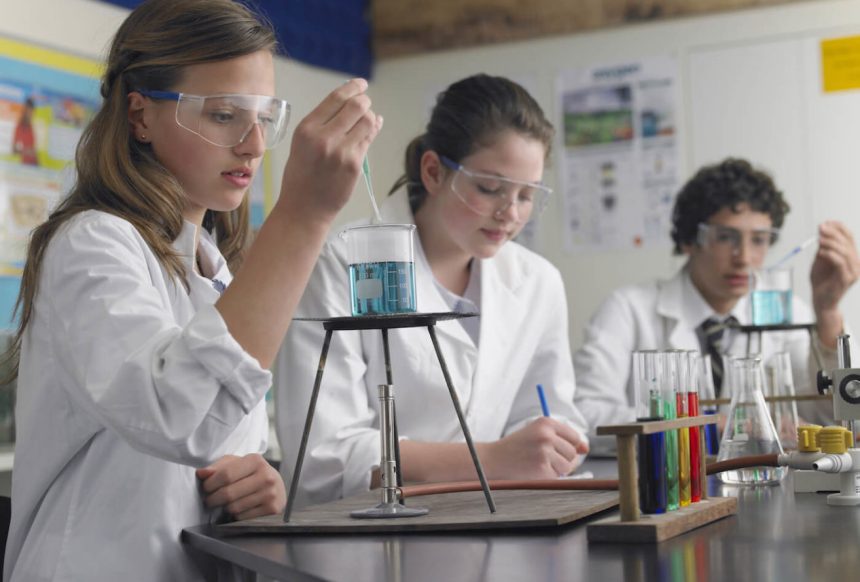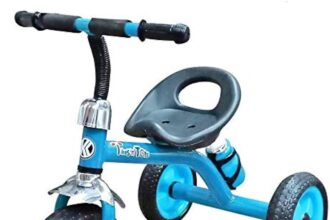Students experience science through hands-on high school laboratory practices. Many experiments utilize potentially hazardous chemicals; all participants must sign a student safety contract before beginning lab work in a science class.
Middle schoolers are becoming more capable of managing their experiment equipment and conducting some experiments without as much oversight from instructors, making a separate classroom with lab space essential.
Be Prepared
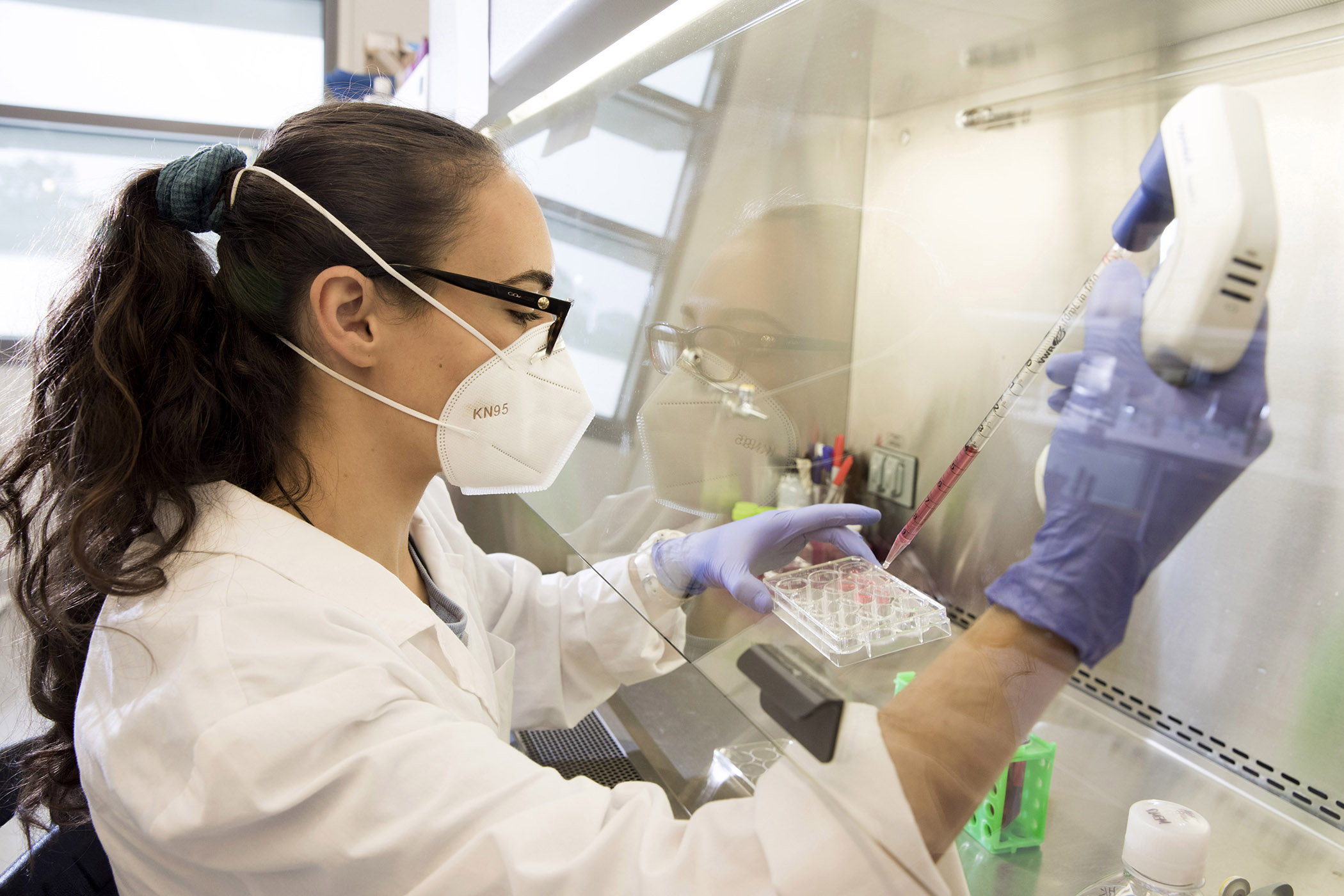
Laboratory work can be nerve-wracking for first-year high school students, especially for first-timers! With all the new school supplies to acquire and navigating both classroom and lab environments to consider and all of their new classes and experiences to navigate – even before class started! However, taking a few steps before class may help calm your nerves and prepare you for the lab before it starts! Here are a few things that may help ease nerves before class begins!
Students should come prepared by reading through all lab instructions and reviewing all material safety data sheets (MSDSs). A good idea would be for students to begin the experiment by creating an empty data table they can fill in during their lab experience, making keeping track of information easier for students. Finally, instructors should give an outline of the entire experiment before starting it to allow time for questions and demonstrate that the lab will apply directly to course concepts.
Before beginning an experiment, all necessary materials and equipment must be available in the laboratory. This includes any essential glassware, chemicals, and other items. Furthermore, students should familiarize themselves with all sanitization and disposal procedures for chemical waste, always use appropriate containers when disposing of chemical waste, and never mix chemicals in sink drains or with insoluble materials like metals, filters, and matches before disposing.
Instructors should promote group work in the laboratory so that all students can participate in all aspects of an experiment. Furthermore, it’s wise to monitor group progress to ensure students remain on track without relying on specific members for specific tasks (e.g., using someone with neat handwriting as a recorder or fast runners as set-up specialists).
Be Careful
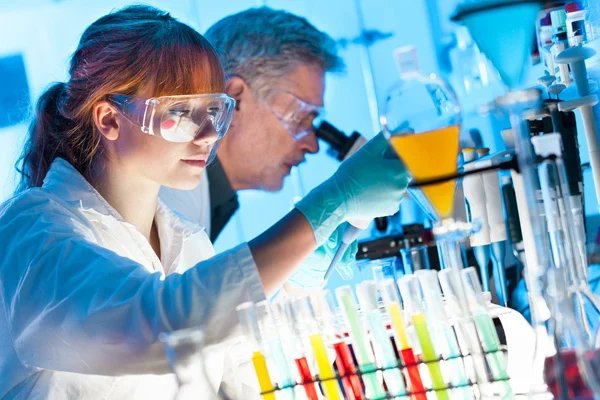
Laboratory work at this level tends to be more advanced than at middle or elementary levels, necessitating greater attention from students in terms of action in the lab and surroundings, such as phones or food distractions. Students must therefore be extra wary when carrying out scientific experiments under supervision. As such, students should pay particular attention when performing these experiments under close supervision.
Students must follow instructions, both written and spoken aloud, carefully, verbally, and in written format. Students should never do anything beyond what has been specified in lab procedures or by their instructor, including reporting any equipment issues to them immediately.
Always wear protective clothing, such as a lab coat and gloves, when working in the laboratory. They should refrain from wearing shorts, skirts, sleeveless shirts, tank tops, or any other articles of clothing that can become caught in equipment; long hair should be tied back neatly; jewelry or any other objects that could get seen should not be worn either; additionally, they must remove their shoes before entering the lab and wash their hands after each activity.
Laboratory areas should remain clear of clutter to help avoid accidents. Students should only bring the materials required for laboratory work into their work areas – no personal belongings, such as books or bags, should be brought with them. When instructed, students should utilize either a chemical fume hood or biosafety cabinet; additionally, they must ensure all equipment has been turned off and chemicals adequately disposed of before leaving the laboratory.
Students should exercise extreme caution when operating balances, using only weighing paper for accurate readings and being mindful that even slight fluctuations in pan sizes may produce inaccurate results. When extracting solids from reagent bottles, students should use caution in removing solids directly from them using either a clean spatula or spoon inside rather than now through their fingertips if unable to shake freely from the bottle itself; they should instead place them in a waste container rather than return into the bottle for later.
Proper Disposal of Chemical
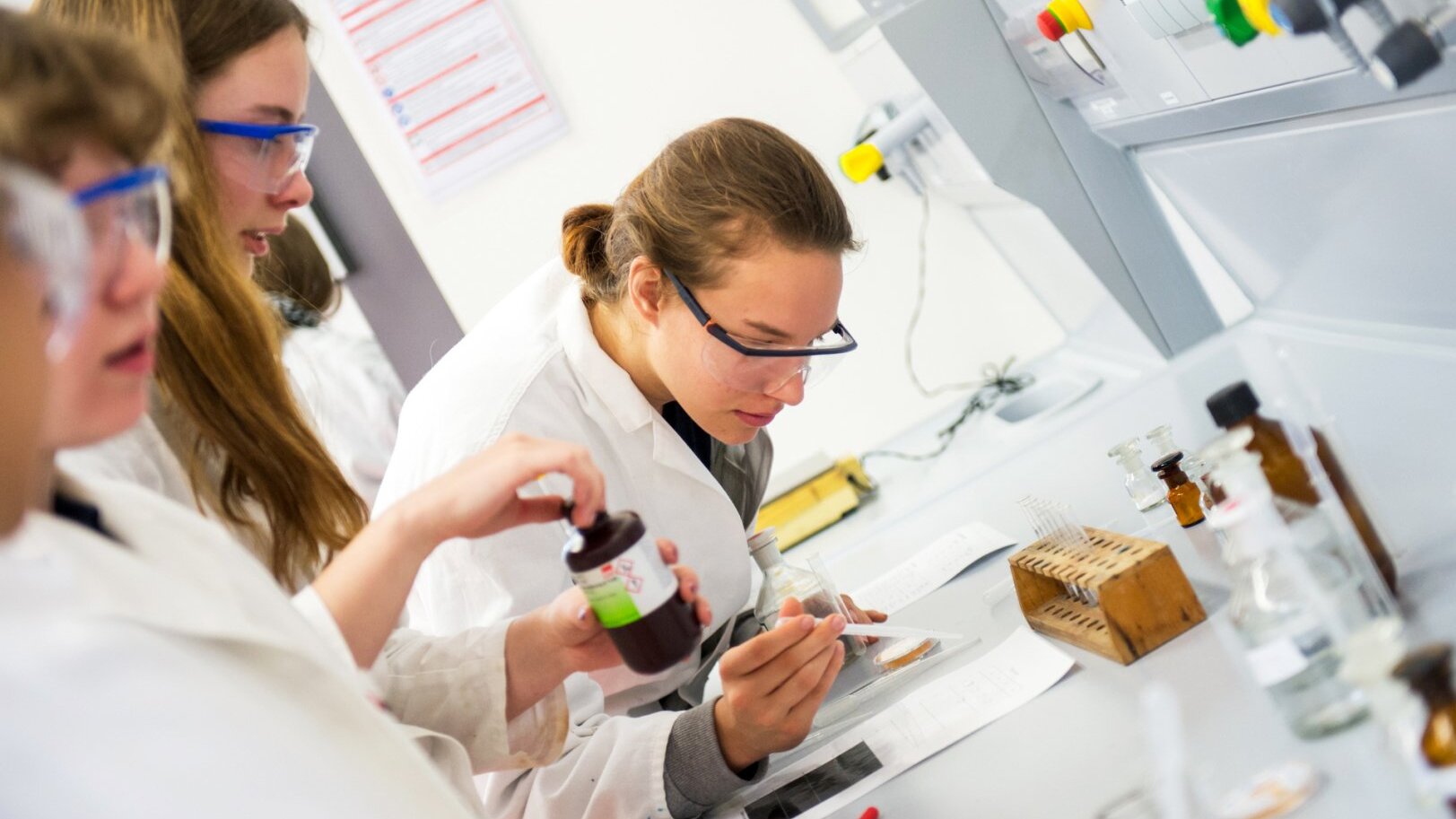
Waste Science laboratories generate large volumes of hazardous chemical waste that must be appropriately disposed of. Chemicals that pose risks include corrosives, toxic materials, and organic solvents like paints, cleaning products, lubricants, photographic supplies, and art materials – and they may even catch fire easily!
Students should strive to collect chemical waste in containers explicitly designated for hazardous disposal, marked with its name and unsafe waste label. Containers should be stored safely away from electrical equipment and heat sources and remain closed except when adding waste; mixing chemical substances may result in difficult or impossible reactions; therefore, any time this happens, the container must be emptied and discarded as hazardous waste immediately.
Proper waste disposal is of utmost importance when working with chemical waste. The University has only 90 days to collect and dispose of this chemical waste properly by following the procedures outlined in its Laboratory Safety Manual.
Records must also be kept of all chemical waste generated to provide EHS staff with accurate information that can assist them with identifying potential problems and designing suitable training programs. Furthermore, this data may help identify opportunities to reduce chemical waste generation; using less hazardous materials (solids or solutions that can be flushed down a drain, for example) may reduce waste output. Furthermore, any spills or injuries should be immediately reported to their instructor to allow swift action to correct any problems and protect against further injuries or property damage.
Follow the Instructions
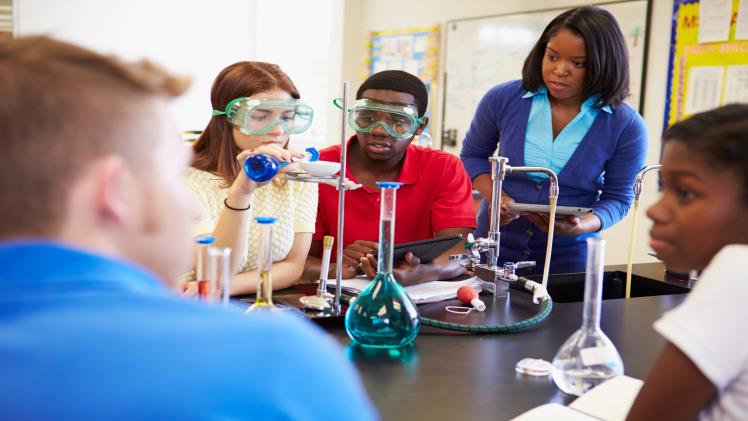
A quality high school lab experience allows students to understand scientific concepts better. They should have enough space and time for independent work while still encouraging experimentation and trial-and-error learning methods – this way, students may discover whether science careers are right for them.
At a high school level, science labs should be outfitted with equipment and furnishings that allow students to perform experiments safely and effectively. Work areas should always remain clean and uncluttered; only materials necessary for the investigation should enter the laboratory; books, purses, backpacks, or any other unnecessary items should remain stored in the classroom area for safekeeping; no horseplay or practical jokes should be tolerated within this environment.
Teachers must maintain a consistent pace of interaction among all groups during laboratory periods, providing several moments of whole-class instruction when needed and monitoring each group’s progress to detect instructional problems and ensure all are on course.
Finally, teachers should assist their students in building the ability to recognize questions that can be investigated experimentally as well as to plan, carry out, evaluate, and report such investigations. This is particularly important given that it can be challenging for students to link theory and practice when not actively investigating; to aid this process, teachers are advised to utilize various writing tools with students so they may develop their ability to articulate scientific arguments as they conduct inquiries.
Labs can be dangerous places. Hot plates, Bunsen burners, chemicals, and sharp blades present potential hazards that should not be disregarded; any distraction can result in irreparable damage or, even in extreme cases, death. Students should remain entirely focused when conducting experiments without talking or playing with classmates during experiments; food consumption, beverages consumption, gum chewing, or cosmetic applications should all be prohibited in a lab setting if at all possible; long hair should also be tied back to not become entangled with equipment.
Students should familiarize themselves with all laboratory safety equipment. This includes a chemical fume hood, emergency shower, first aid kit, fire blanket, fire extinguisher use, and building evacuation plans.
Separating laboratory waste is essential, including chemicals, gloves, metals, and paper products that have no use left for them in experiments. Once collected, they should be stored in containers that have been labeled properly. Furthermore, be sure to read all labels of chemicals you use for experiments, as this will prevent an accident like pouring water into acid that releases dangerous gasses into the atmosphere.
Students should adhere to laboratory procedures outlined by their instructor and only conduct experiments authorized by them. Students should not work alone and carefully follow written and verbal instructions, informing their instructor if unsatisfactory results or problems arise; pregnancy, allergy issues, or taking any medications must also be reported immediately to instructors as soon as they become apparent, with notice given of anyone at higher risk for injury or illness being alerted as quickly as possible.
Use Personal Protective Equipment (PPE) In any high school laboratory, personal protective equipment (PPE) is integral to student safety. PPE includes lab coats, gloves, safety goggles, and face shields, which serve as barriers between them and potentially hazardous substances.
PPE (Personal Protective Equipment) must be utilized and cared for correctly to maximize benefits and minimize laboratory risks. Gloves should be discarded after every experiment and never reused; safety goggles/face shields should be regularly checked for signs of damage/wear, routinely cleaned, and free from debris build-up before reuse, etc. Properly employing their PPE, students can significantly lower risk in lab environments.
Students enrolled in high school science labs typically encounter a range of laboratory equipment – from simple beakers and test tubes to more complex instruments like spectrophotometers and microscopes – which they must learn to use for accurate experiments and overall safety properly. Mastery of laboratory equipment is critical for producing accurate experimental results and overall safety.
Proper handling and care of laboratory equipment are equally crucial. Students should avoid forcing any equipment as this could damage or malfunction; any broken or malfunctioning items should be immediately reported to their instructors for repair; after using equipment, students should clean it thoroughly and store it back in its designated storage area to maintain an orderly laboratory space.
Understanding Chemical Hazards
Chemicals are integral to many science experiments, but mishandling could present serious hazards. High school students must learn the risks associated with the chemicals they work with and how best to handle them safely.
Students exposed to chemicals should know the appropriate emergency procedures, including where to locate eyewash stations and emergency showers in case of accidental exposure. Instructors should emphasize the necessity of reporting chemical spills or accidents immediately to facilitate swift responses and ensure rapid responses.
Maintain a Clear Understanding of Emergency Procedures
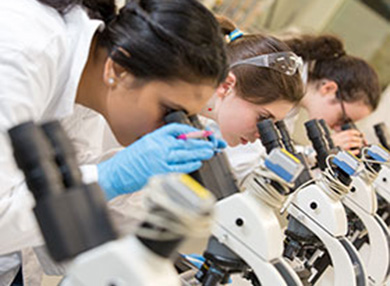
High school laboratories must have clear and comprehensive emergency plans to deal with situations such as chemical spills, fires, or injuries in the laboratory. Before beginning lab work, all students should receive adequate information about these plans.
Regular drills and simulations can further strengthen emergency preparedness among students. By familiarizing themselves with emergency procedures, they will be better positioned to react calmly and appropriately in an accident or emergency.
Report Safety Issues Maintaining a safe learning environment is everyone’s responsibility, so high school students should never hesitate to report any safety concerns they observe in the laboratory, such as broken equipment or hazardous conditions – or unsafe behaviors by peers – that they witness in class or lab settings.
Students can contribute invaluable feedback about laboratory practices and protocols by reporting immediate safety issues, participating in discussions regarding safety issues, and suggesting improvements by actively contributing their insights towards bettering high school science laboratories overall.
Conclusion High school laboratory experiences are critical in science students’ educational process. To ensure a safe and productive learning experience, they must come prepared, carefully follow instructions, and adhere to safety precautions diligently. Proper chemical waste disposal is essential to creating an odorless and risk-free laboratory environment, and PPE should always be worn to minimize potential accidents. Mastery of laboratory equipment and understanding of chemical hazards are fundamental skills for successful experimentation. Emergency procedures and reporting safety issues should also be adhered to to ensure a safe laboratory setting – following this protocol allows high school students to maximize their lab experiences and gain deeper insights into scientific concepts.


